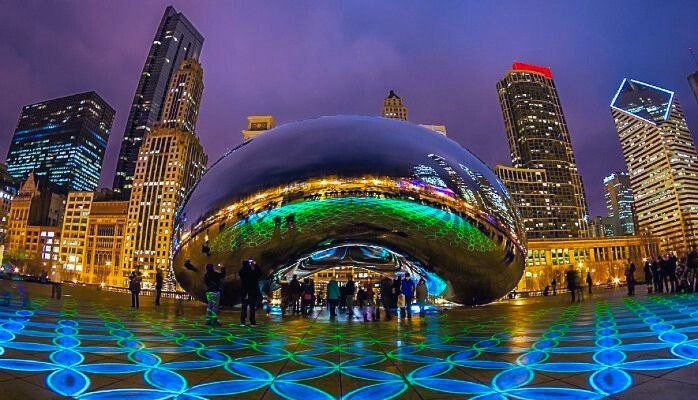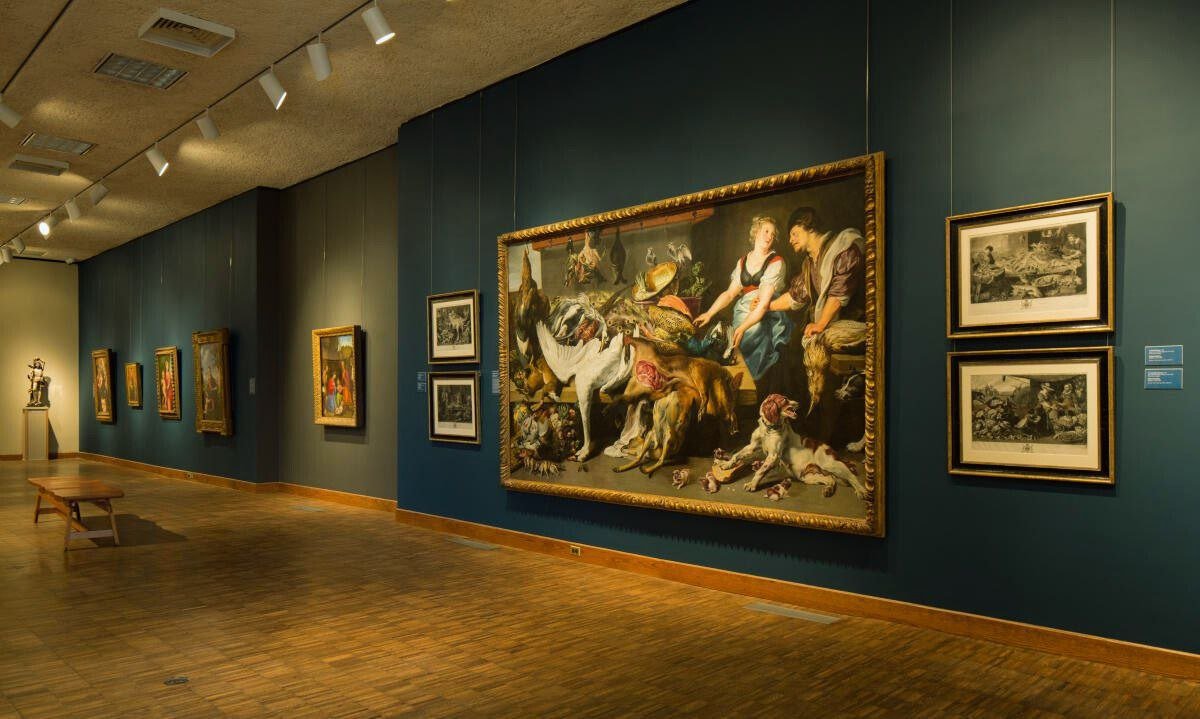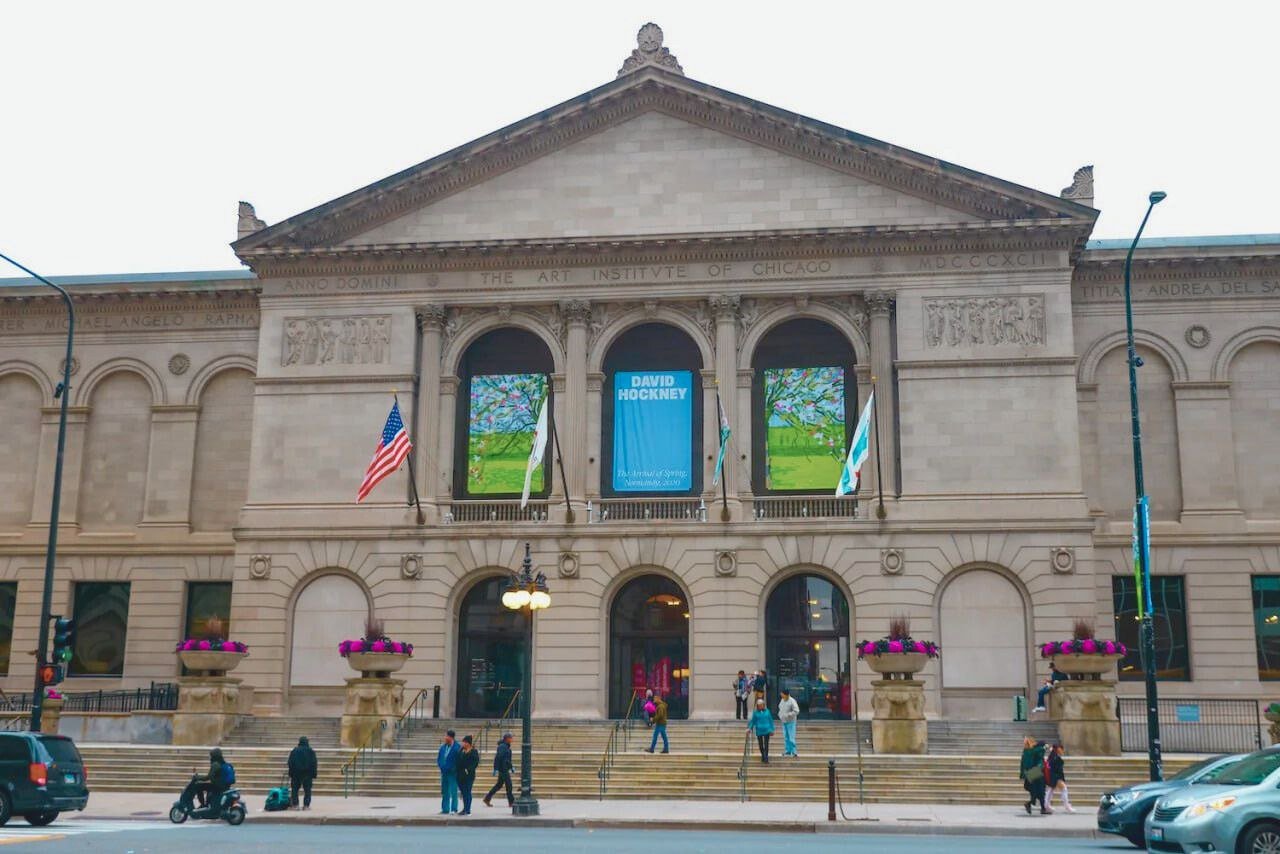Contents
- Introduction to The Art Institute of Chicago
- Architectural Marvel: The Building and Its Expansion
- World-Renowned Collections and Exhibits
- Educational Programs and Community Outreach
- Visitor Experience: Tours, Amenities, and Accessibility
- Special Events and Membership Benefits
- Behind the Scenes: Conservation and Research
- Planning Your Visit: Tips and Recommendations
Introduction to The Art Institute of Chicago
The Art Institute of Chicago, established in 1879, is a cornerstone of cultural heritage in both the United States and the global art community. As one of the oldest and largest art museums in the country, it has played a pivotal role in the preservation and celebration of artistic endeavors. Located in the heart of Chicago, Illinois, the museum is more than just a repository of art; it is a dynamic institution committed to education, conservation, and the advancement of the arts.
Founded with the mission to “collect, preserve, and interpret works of art of the highest quality,” The Art Institute of Chicago has amassed a remarkable collection that spans centuries and continents. From ancient artifacts to contemporary masterpieces, the museum’s holdings include over 300,000 works of art, making it a vital resource for scholars, students, and art enthusiasts alike. Its renowned collection includes iconic pieces such as Grant Wood’s “American Gothic” and Georges Seurat’s “A Sunday on La Grande Jatte.”
Beyond its impressive collection, the Art Institute is dedicated to education and public engagement. It offers a wide range of programs, workshops, and lectures designed to inspire and educate visitors of all ages. The museum’s commitment to education is evident in its robust school programs and collaborations with educational institutions, which aim to foster a deeper understanding and appreciation of the arts.
Conservation is another critical aspect of the museum’s mission. The Art Institute employs a team of experts who work tirelessly to preserve and restore artworks, ensuring that they can be enjoyed by future generations. This dedication to conservation underscores the museum’s role in safeguarding cultural heritage for posterity.
In summary, The Art Institute of Chicago stands as a beacon of artistic and cultural significance. Its commitment to education, conservation, and the preservation of cultural heritage makes it an invaluable institution not only for the city of Chicago but for the global art community as well.

Architectural Marvel: The Building and Its Expansion
The Art Institute of Chicago stands as a testament to architectural excellence and innovation, seamlessly blending historical grandeur with modern sophistication. The original Beaux-Arts structure, designed by the architectural firm Shepley, Rutan, and Coolidge, opened its doors in 1893. This iconic building, with its symmetrical design, grand staircases, and detailed ornamentation, exemplifies the Beaux-Arts style that was prevalent in the late 19th and early 20th centuries. Its classical façade and majestic lions at the entrance have become synonymous with the cultural heritage of Chicago.
In response to the evolving needs of the museum and its growing collection, the Art Institute has undergone several expansions and renovations. One of the most notable additions is the Modern Wing, designed by the renowned architect Renzo Piano. Completed in 2009, this contemporary structure adds 264,000 square feet of gallery space, making it one of the largest museum expansions in recent history. The Modern Wing’s design is characterized by its sleek lines, extensive use of glass, and the innovative “flying carpet” roof, which allows natural light to flood the galleries. This thoughtful design not only enhances the aesthetic appeal of the building but also significantly improves the visitor experience by creating a bright and inviting atmosphere.
The continuous expansion and renovation efforts at the Art Institute demonstrate a commitment to preserving its historical roots while embracing modernity. The museum’s ability to integrate new architectural elements with the existing Beaux-Arts structure showcases a harmonious blend of old and new. These efforts ensure that the Art Institute remains a dynamic and engaging space for art enthusiasts and casual visitors alike.
From the grandeur of the original building to the contemporary elegance of the Modern Wing, the architectural evolution of the Art Institute of Chicago reflects its dedication to providing a world-class cultural experience. The thoughtful design and continuous enhancements not only elevate the aesthetic appeal of the museum but also significantly contribute to the overall visitor experience, making it a must-visit destination in Chicago.

World-Renowned Collections and Exhibits
The Art Institute of Chicago boasts an extensive and diverse collection that reflects the breadth and depth of artistic expression across centuries and continents. This cultural gem hosts over 300,000 works of art, offering visitors an unparalleled experience. Among the museum’s most iconic pieces is Grant Wood’s American Gothic, a masterful depiction of rural American life that has become an enduring symbol of the nation’s cultural heritage.
Another highlight is Georges Seurat’s A Sunday on La Grande Jatte, a prime example of pointillism that captures a serene moment on the banks of the River Seine. This monumental work, with its meticulous technique and vibrant palette, is a testament to Seurat’s innovative approach to color and composition. Equally captivating is Vincent van Gogh’s The Bedroom, which provides an intimate glimpse into the artist’s personal space and emotional state through its bold colors and expressive brushstrokes.

Beyond these masterpieces, the Art Institute of Chicago’s permanent collection spans a variety of genres and periods, including ancient artifacts, modern art, and contemporary installations. The museum’s European paintings gallery features works by renowned artists such as Rembrandt, Monet, and Picasso, while the African and Amerindian collections offer a rich array of sculptures, textiles, and ceremonial objects. The Asian art section includes exquisite examples of Chinese ceramics, Japanese prints, and Indian sculptures, presenting a broad spectrum of cultural traditions and artistic practices.
Complementing the permanent collection are the museum’s dynamic temporary exhibits, which showcase both emerging artists and established figures. These rotating exhibits provide fresh perspectives and allow visitors to engage with current trends and themes in the art world. The temporary exhibits often intersect with the permanent collection, creating dialogues between past and present, and offering new insights into familiar works.
Overall, the Art Institute of Chicago’s world-renowned collections and exhibits make it a must-visit destination for art enthusiasts and cultural explorers alike. Its diverse offerings ensure that there is always something new to discover, making each visit a unique and enriching experience.
Educational Programs and Community Outreach
The Art Institute of Chicago offers a robust array of educational programs designed to engage a diverse audience, fostering a profound appreciation for the arts within the community. These initiatives cater to various age groups and demographics, ensuring that everyone has the opportunity to experience the transformative power of art.
One of the cornerstones of the Art Institute’s educational offerings is its extensive range of art classes. These classes encompass everything from beginner-level workshops to advanced courses, allowing participants to explore different artistic techniques and mediums. Whether it’s painting, sculpture, or digital art, there is a class tailored to every interest and skill level. Additionally, the Art Institute organizes lectures and seminars led by renowned artists and scholars, providing attendees with unique insights into the world of art history and contemporary practices.
For younger audiences, the Art Institute has developed a series of school programs that integrate seamlessly with the educational curriculum. These programs include guided tours, hands-on workshops, and interactive activities designed to encourage creativity and critical thinking. By collaborating with local schools, the Art Institute ensures that students have access to enriching artistic experiences that complement their formal education.
Community outreach is another vital aspect of the Art Institute’s mission. Through partnerships with local organizations, the museum extends its reach beyond its walls, making art accessible to underserved communities. Notable initiatives include the “Art in the Neighborhood” program, which brings mobile art studios to various locations throughout Chicago. These studios provide free art-making opportunities and educational resources, helping to bridge the gap for those who may not have easy access to the museum.
The Art Institute also hosts special events and workshops tailored to different community groups, such as seniors, veterans, and individuals with disabilities. These programs are designed to be inclusive, ensuring that everyone can participate in and benefit from the museum’s offerings. By fostering a sense of inclusivity and accessibility, the Art Institute of Chicago plays a crucial role in building a culturally rich and connected community.
Visitor Experience: Tours, Amenities, and Accessibility
The Art Institute of Chicago offers a comprehensive visitor experience, meticulously designed to cater to a diverse array of interests and needs. Guided tours are a prominent feature, allowing visitors to delve into the museum’s extensive collection with the expertise of knowledgeable docents. These tours provide insightful narratives that bring the art to life, highlighting historical contexts and artistic techniques. For those who prefer a more independent exploration, audio guides are readily available. These guides offer a flexible alternative, enabling visitors to explore at their own pace while still benefiting from detailed commentary on key pieces.
To further enhance the visitor experience, the museum boasts a variety of amenities. Rest areas are strategically placed throughout the museum, providing comfortable spots for relaxation amidst the exploration. Several cafés and dining options are available, offering a range of culinary delights that cater to different tastes and dietary requirements. The museum’s gift shops are also noteworthy, featuring a curated selection of art-related merchandise, books, and souvenirs that allow visitors to take a piece of the experience home with them.
Interactive exhibits are another highlight, particularly appealing to younger visitors and families. These exhibits provide a hands-on approach to art appreciation, fostering engagement and learning through interactive displays and activities. The museum is committed to ensuring that these experiences are accessible to all visitors, including those with disabilities. Accessibility is a key focus, with the museum providing various accommodations such as wheelchair rentals, accessible restrooms, and elevators. Additionally, the Art Institute offers specialized tours for visitors with visual or hearing impairments, ensuring an inclusive experience for everyone.
In summary, the Art Institute of Chicago excels in delivering a well-rounded visitor experience. From guided tours and audio guides to dining options and accessible amenities, the museum is dedicated to providing an enriching and enjoyable visit for all.
Special Events and Membership Benefits
The Art Institute of Chicago is renowned not only for its extensive and diverse collection of art but also for its vibrant calendar of special events. Throughout the year, the museum hosts a myriad of art fairs, cultural festivals, and exclusive member events that cater to a wide range of interests and artistic inclinations. These events offer visitors unique opportunities to engage with art and culture in dynamic and interactive ways.
One of the standout features of the Art Institute’s event calendar is its annual art fairs, which attract art enthusiasts from around the globe. These fairs often feature contemporary works from emerging artists, providing a platform for new talent to be recognized. Additionally, the museum organizes cultural festivals that celebrate the rich diversity of Chicago’s artistic community. These festivals often include performances, workshops, and lectures, offering a comprehensive cultural experience.
Membership at the Art Institute of Chicago comes with an array of benefits that enhance the overall museum experience. Members enjoy free unlimited admission, allowing them to explore the museum’s galleries at their leisure. Furthermore, membership provides discounts on museum store purchases, dining, and special event tickets. These benefits make membership an attractive option for frequent visitors and art lovers.
Exclusive member events are another highlight of membership at the Art Institute. Members have access to members-only programs and previews of new exhibitions, often accompanied by talks from curators and artists. These events offer members an insider’s perspective on the museum’s latest acquisitions and exhibitions, deepening their appreciation and understanding of the art on display.
Notable annual events, such as the popular “Night at the Museum” and the “Summer Solstice Celebration,” draw significant attendance and are eagerly anticipated by both members and the public. These events often combine art, music, and social activities, creating memorable experiences that highlight the Art Institute of Chicago as a cultural gem in the city.
Behind the Scenes: Conservation and Research
The Art Institute of Chicago is renowned not only for its extensive collection of art but also for the meticulous efforts that go into conserving and researching these invaluable works. Behind the scenes, a dedicated team of conservators, curators, and researchers work tirelessly to ensure that each piece is preserved for future generations to enjoy. Their work is both an art and a science, combining traditional techniques with cutting-edge technology to maintain the integrity of the museum’s collection.
Conservators at the Art Institute employ a variety of methodologies to address the unique needs of different artworks. Paintings, sculptures, textiles, and other artifacts each require specialized care. For instance, paintings might undergo careful cleaning to remove centuries of grime, while textiles might receive delicate stitching to repair damage. Advanced imaging technologies, such as X-radiography and infrared reflectography, allow conservators to examine artworks beneath their surface layers, revealing the artist’s original techniques and any previous restorations.
One notable conservation project at the Art Institute involved the restoration of Georges Seurat’s iconic painting, “A Sunday on La Grande Jatte.” This extensive project required conservators to remove a discolored varnish layer that had altered the painting’s original hues. Through careful analysis and painstaking effort, the team was able to restore the painting’s vibrant colors, ensuring that Seurat’s masterpiece could be appreciated as he intended.
In addition to conservation, research plays a crucial role in the museum’s mission. Curators and researchers delve into the historical and cultural contexts of the artworks, uncovering insights that enrich public understanding. Collaborative efforts with institutions worldwide facilitate the sharing of knowledge and expertise, advancing the field of art history and conservation.
The Art Institute of Chicago’s commitment to conservation and research exemplifies its dedication to preserving cultural heritage. Through the combined efforts of skilled professionals and the application of advanced technology, the museum ensures that its collection remains a vibrant and enduring testament to human creativity and history.
Planning Your Visit: Tips and Recommendations
When planning your visit to the Art Institute of Chicago, it’s essential to consider several practical aspects to ensure a smooth and enriching experience. The museum is open daily from 10:30 AM to 5:00 PM, with extended hours until 8:00 PM on Thursdays. Admission fees are $25 for adults, $19 for seniors and students, and free for children under 14. Illinois residents enjoy special discounts, and the museum offers free admission on certain weekdays for Chicago residents.
To make the most of your visit, it’s advisable to arrive early in the morning or later in the afternoon to avoid peak hours. Weekdays, particularly Tuesdays and Wednesdays, tend to be less crowded, providing a more serene environment to appreciate the museum’s extensive collection. For first-time visitors, the museum’s highlights include masterpieces like Grant Wood’s “American Gothic,” Georges Seurat’s “A Sunday on La Grande Jatte,” and Vincent van Gogh’s “The Bedroom.” The Modern Wing, designed by Renzo Piano, is also a must-see, showcasing contemporary art in an architecturally stunning space.
A suggested itinerary for a comprehensive experience includes starting with the Impressionist and Post-Impressionist collections, followed by a tour of the Modern Wing. After a lunch break at one of the museum’s cafes, explore the American Art section and finish your visit with the Thorne Miniature Rooms. For those interested in more in-depth exploration, the museum offers guided tours and audio guides to enhance your understanding of the artworks.
For visitors planning an extended stay, the Art Institute is conveniently located near several other attractions, such as Millennium Park, the Chicago Cultural Center, and the historic Auditorium Theatre. Accommodation options range from luxury hotels like the Palmer House Hilton to more budget-friendly choices, all within walking distance of the museum. By following these recommendations, you can ensure a fulfilling and memorable visit to one of Chicago’s most cherished cultural gems.
OUR SITE: toinewsalert.com

